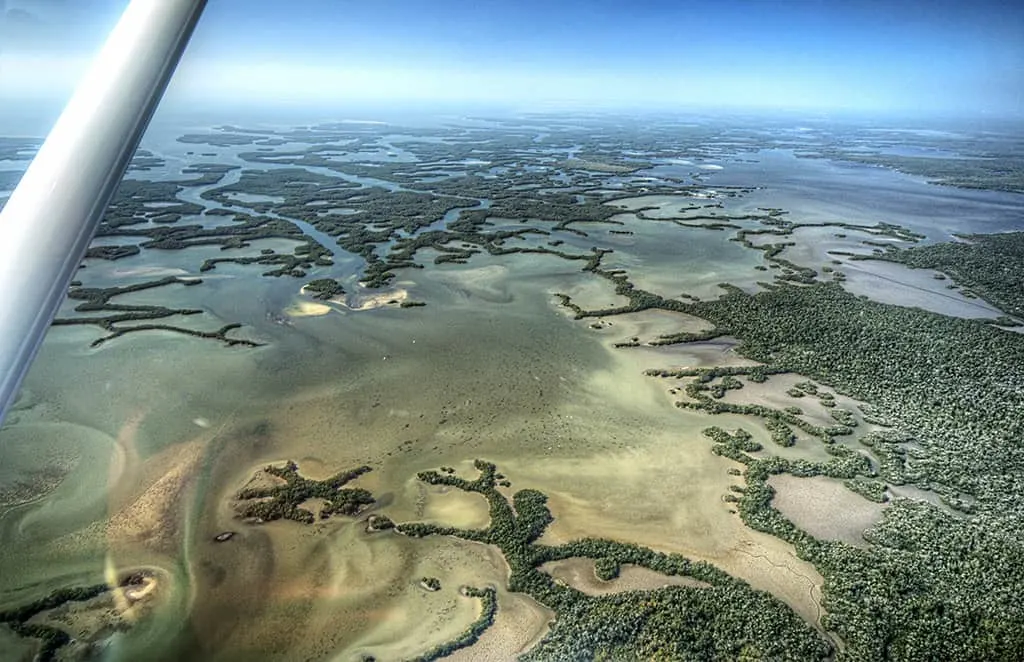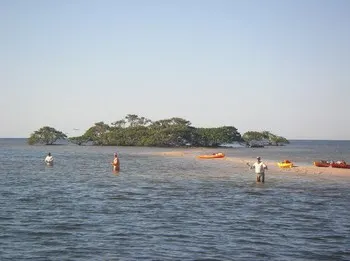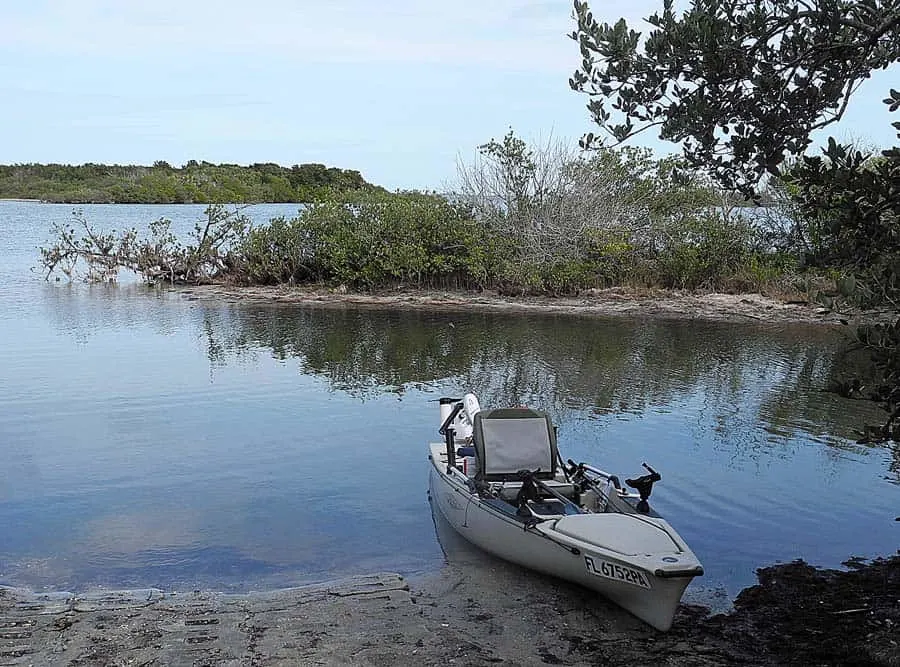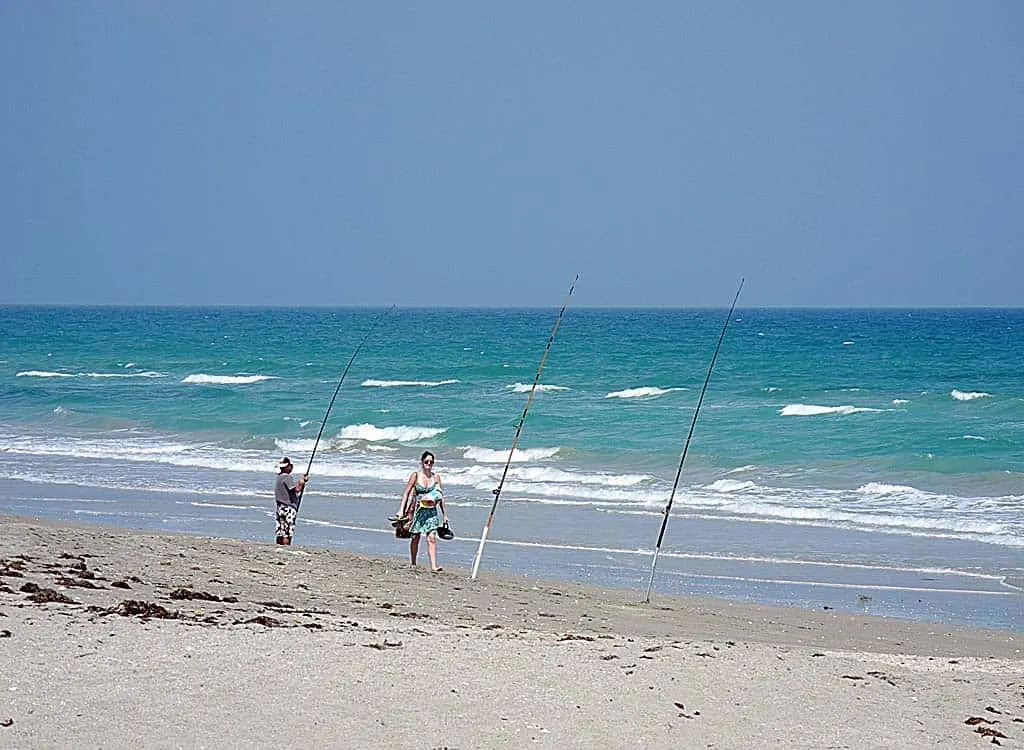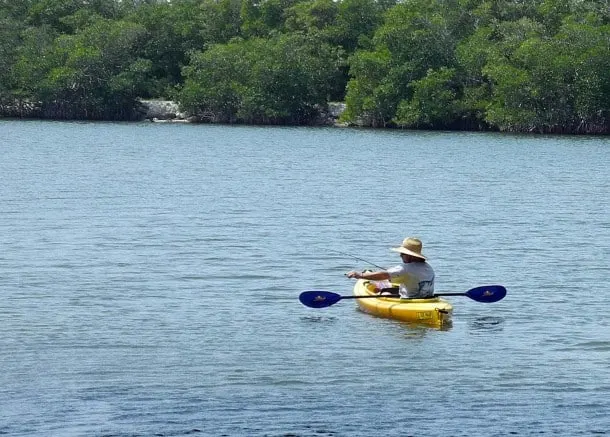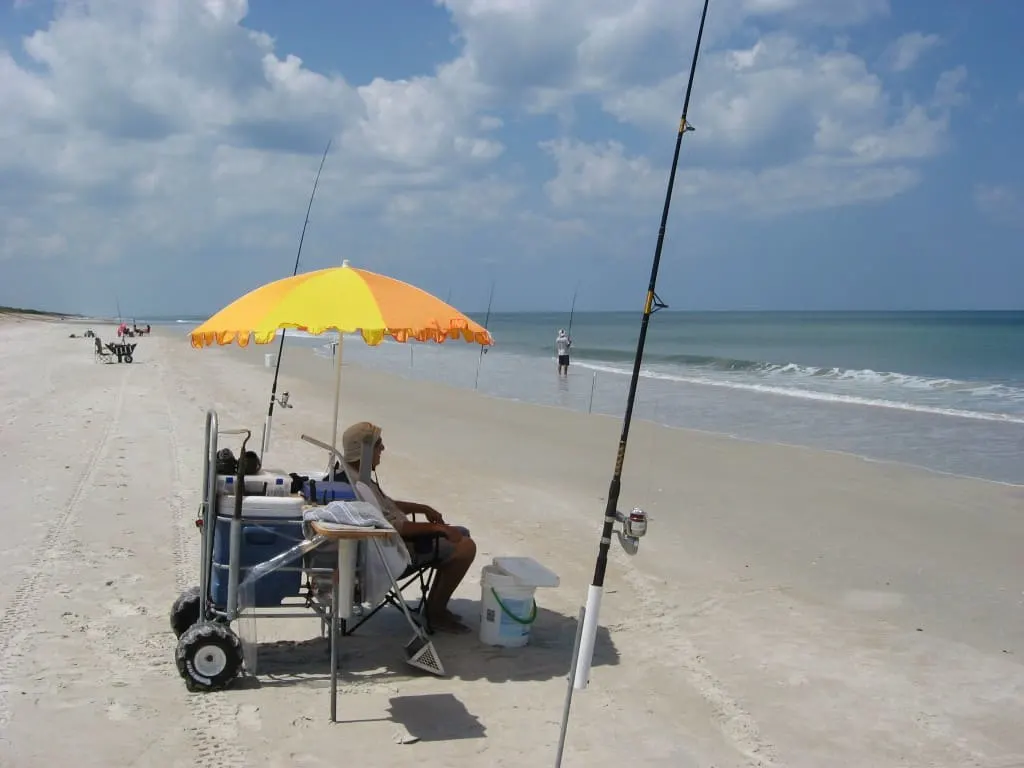My favorite places for fishing in Florida range from back-country fishing in the Ten Thousand Islands to the beaches of Canaveral and Hutchinson Island. Throw into the mix the freshwaters of the Loxahatchee Wildlife Refuge and Lake O.
I especially love Islamorada, off-shore to “The Hump” or just dangling a line from the bridges of Lower Matecumbe Key.
I’ve never fished in the Panhandle or along the Big Bend. (Doesn’t everybody have a bucket list?)
Florida is fishing heaven — and fishing is ideal for social distancing — for both freshwater and saltwater angling, so let’s go fishing!
Recipes for fish mentioned in this article can be found at the end of this article.
Ten Thousand Islands
Saltwater fishing
This 100-mile string of mangrove islands on the edge of the Everglades offers some of the best back-country fishing in Florida.
The brackish mix of salt and fresh waters laced with harboring mangroves is a breeding ground for hundreds of species, but especially snook, redfish and sea bass.
Fish the passes on swift tides for snook, seek out the elusive redfish around the oyster bars or drop a line in a pool for sea bass. You will not be disappointed.
If you paddle your kayak through the main channel from the Barron River in Everglades City, through Indian Key Pass to the Gulf of Mexico, you’ll come upon sandbar jutting out from Indian Key, a popular spot for kayakers who fish the currents entering and leaving the pass. (Photo at right.)
Hot tip: If your fishing from small boat, such as a kayak, go out on the outgoing tide and return on the incoming tide to avoid fighting swift currents.
If you go: You need a boat and a sense of adventure. A sense of direction won’t help much, so be sure to have GPS and charts. It’s very easy to get seriously lost in the mangroves. Almost any boat will do, although the smaller and shallower draft, the better. Oyster bars in the back country are best accessed with a kayak.
Charters: First-timers should consider a charter. The charter captains in Everglades City know these islands well, and they’ll take you straight to the hot spots.
Getting there: Your best bet is to launch from Everglades City. Kayakers can drop into Chokoluskee Bay from the Everglades National Park Visitor Center. Goodland on Marco Island is an excellent launch point for motorized vessels.
Places to Stay: Everglades City | Marco Island
More resources at the end of this article
Islamorada
Saltwater fishing
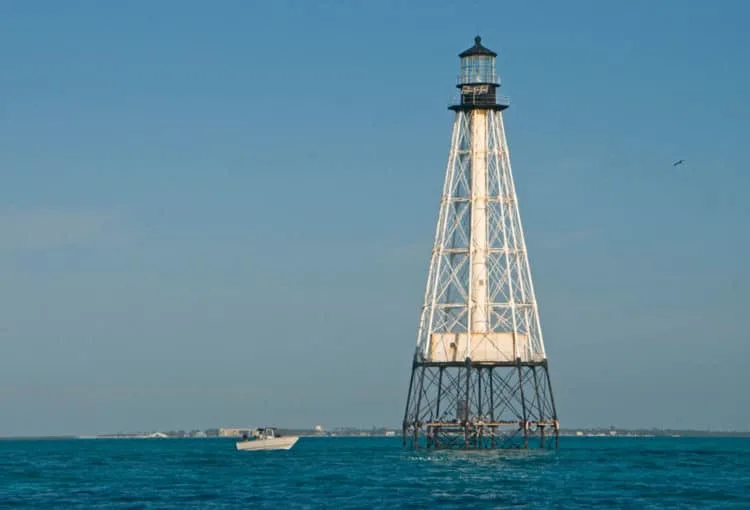
Fishing in Florida doesn’t get much better than Islamorada, which bills itself as the “Sportfishing Capitol of the World.”
The offshore reefs are teeming with fish, most notably my favorite catch in the Keys, the tasty yellowtail snapper. In summer, they dance on the water.
Enjoy the party boats and go out to near-shore reefs or Alligator Light for a half-day on the water. These outings are inexpensive, and they almost always produce a catch. Listen to the mates.
For serious sportfishing, and that is what Islamorada is about, “The Hump” is a popular if not legendary destination for charters. Smack dab in the Gulf Stream, you can try your hand at sailfishing, mahi mahi or tuna aboard a charter out of Whale Harbor, Holiday Isle or Bud ‘n’ Mary’s Marina.
At the bottom end of Lower Matecumbe Key, you’ll find the best “shore” fishing on the Channel 2 and Channel 5 bridges. Grouper hole up near the pilings, so you won’t need to cast far, and there is a constant flow of fish on the currents running between Florida Bay and the Atlantic Ocean.
Did I mention that Islamorada is also home of “The Temple of Fishing” — Worldwide Sportsman, owned by Bass Pro, a must stop for any angler
Hot Tip: Party boats carry around 20 anglers. Wannabes cram the stern. You should join the regular locals on the bow. Less crowded, and you’ll learn more.
If you go: Plan on arriving before dawn, or stay the night before so you’re ready to go first thing in the morning. The best fishing is when the fish are hungry, early morning or dusk. If you are fishing from your own boat, be sure to have ample supply of chum. Yellowtail go nuts around chum.
Charters: Party boats for half-day and full-day outings can be booked at Whale Harbor, across from Holiday Isle, or Bud and Mary’s Marina at the bottom end of Upper Matecumbe Key.
Getting there: Take the scenic Overseas Highway through Key Largo and Plantation Key to Upper Matecumbe Key. You’ve arrived in Islamorada!
Hotel listings in Islamorada
More resources at the end of this article
Loxahatchee National Wildlife Refuge
Freshwater fishing
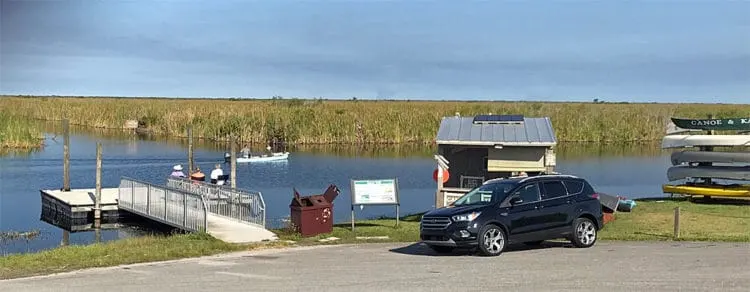
Some of the best bass fishing in Florida can be found in the Loxahatchee National Wildlife Refuge in Palm Beach County.
The refuge is flush with bass, crappie and bream, not to mention an occasional fighting garfish.
The main entrance west of Boynton Beach, of U.S. 441, has a paved boat ramp, a fishing dock, easy access to an excellent canoe trail and plenty of parking. I use the unpaved boat ramp at the less-crowded south entrance off Loxahatchee Road in north Broward County.
When the water level is high, the lock at the south entrance dumps the overflow into the Hillsboro Canal, and anglers line up on both sides of the spill to catch fish caught in the flow.
A kayak will give you access into the sawgrass. You’ll see the openings. Or you can fish from land along the deeper rim canal. I’ve caught some lunker bass here on a fly rod with black poppers.
A lot of high-powered bass boats launch here, but they all scoot west on the rim canal to more isolated, presumably productive fishing holes at the back end of the refuge.
Landlubber? No problem. Hike down the levy separating the refuge from Everglades Water Conservation Area 3A to the lock that separates the two and fish the pool on the south side of the small bridge over the lock.
You’ll also see cane-polers fishing in the canals outside the levy or below the locks in the Hillsboro Canal.
Hot tip: Find a quiet spot, either on the water or on the levee, and wile away the day. It’s beautiful out here. Watch for movement in the water, and fish the edge of the grasses.
If you go: Both the Refuge and the Conservation Area are chock full of alligators, who quietly watch your line, then pounce with lightning speed when you get a fish on. The gators won’t bother you, but they want your fish. You may see a few gators sunning themselves on the levy. Leave them be. If you walk slowly, they will scoot into the water. Don’t bring your pets. Alligators like small pets almost as much as your lunker bass.
Things to do: There’s an airboat concession just before the south entrance of the refuge. Airboats are not allowed in the refuge, but they will take you out into the adjacent Conservation Area. There’s access to levies for many miles of hiking and bicycling.
Getting There: Access to the main entrance is on Lee Road, off U.S. 441, west of Boynton Beach. Turn west at Bedner’s Farmers’ Market. There is an entrance fee unless you have a National Parks pass. The south entrance is on Loxahatchee Road, off U.S. 441 in Parkland. There’s a new Wawa on the corner. The road parallels the Hillsboro Canal for about six miles.
Hotel listings in Boynton Beach, Boca Raton and other nearby cities.
More resources at the end of this article
Lake Okeechobee
Freshwater fishing
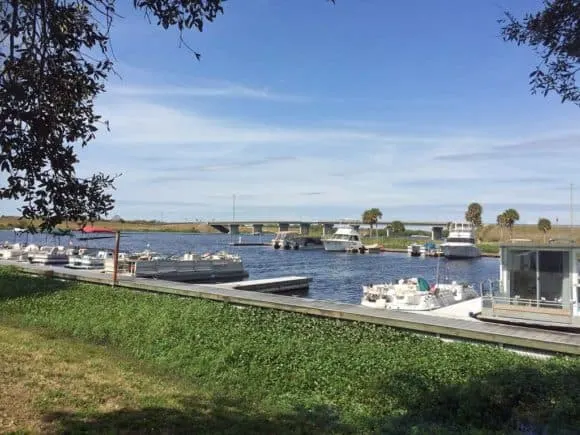
The “Bass Fishing Capitol of the World” attracts the pros, so you know it’s a productive fishery. You can fish from shore, but you are much better off in a boat so you can get into deeper water and near natural structure for black bass, crappie and bream.
For the most part, Lake O is shallow and water levels vary by the season. In Spring, the water is flushed out into man-made canals to prepare for hurricane season.
This essentially is a man-made lake, contained by levies and locks built by the U.S. Army Corps of Engineers. Before the Corps, it was a sprawling marsh that marked the northernmost Everglades. The Corps got involved after a 1928 hurricane overwhelmed surrounding communities, killing an estimated 2,000 people.
The Corps’ levies displaced the normal flow of water through the Everglades, allowing the surrounding agricultural areas to expand and tap into the rich loam, known locally as “Black Gold”, primarily for the production of sugar cane and rice. Cattle ranches surround the north and eastern edges of the lake.
The access points considered the best for fishing are Belle Glade and Pahokee on the south side, the city of Okeechobee on the north, and Clewiston on the west side, where bass legend Roland Martin has a resort and marina.
Clewiston is a hot spot for finding charter captains, and these guys will give you a fun day on the lake. I’ve stayed at the historic Clewiston Inn for its southern charm.
If you want a more rustic experience, there’s an old fish camp north of Clewiston called “Uncle Joe’s Fish Camp,” where I’ve launched my canoe and fished in the canals that wind through the marshes to the open lake.
The public boat ramps at Okee-Tantie, pictured above, is a popular access point just west of the city of Okeechobee.
If you go: Lake Okeechobee is a big lake, so pick your destination before you go. Wander around the lake on another day. Uncle Joe’s Fish Camp is north of Clewiston, and it’s pretty funky. Still, it offers a boat ramp and great fishing. Accommodations include a campground, motel rooms and rustic cabins (thumbs down). Stay at the Clewiston Inn, as we did.
Charters: Captains for hire can be found in most communities around the lake, but the best can be found in Clewiston and Okeechobee City.
Getting there: Clewiston and Uncle Joe’s are off U.S 27 on the west side of the lake. It’s a bit tricky to get to Uncle Joe’s, but you’ll see a few old signs to guide you through the rice paddies to get there. Belle Glade and Pahokee are easily accessed from U.S. 98 (State Road 80), also known as Southern Boulevard out of West Palm Beach. The City of Okeechobee is best accessed from I-95 on the scenic Martin Highway (State Road 714).
Hotel listings in Clewiston | Okeechobee
More resources at the end of this article
Mosquito Lagoon
Saltwater fishing
The Indian River runs from New Smyrna Beach south to Stuart, and while the entire stretch is popular for fishing for black drum, snook and spotted sea bass, it’s hard to beat Mosquito Lagoon at the north end for red drum, more popularly known as redfish.
Clams and oysters abound in Mosquito Lagoon, which makes it an ideal sanctuary for redfish, which you can find tailing around the oysters bars in shallow water.
The lagoon is easily accessed from Canaveral National Seashore, the Merritt Island National Wildlife Refuge (pictured above) and multiple access points on the west side of the Indian River in Titusville, Edgewater and Oak Hill.
For a rustic, Old Florida experience, try the Oak Hill Fish Camp, which has an RV campground. Your bonus is the nearby Goodrich Seafood, a waterfront restaurant where you can enjoy standard crab shack fare on the deck overlooking the lagoon.
Canoes and kayaks offer the best access to oyster bars in the lagoon for redfish, but I can honestly say that fishing is abundant almost anywhere in the lagoon.
Hot tip: Patience is the key to catching redfish; you may be in for a long wait. Sit quietly and watch for the tail, then cast your bait in their path.
If you go: The mosquitoes are not as bad here as the name suggests, but the no-see-ums are killers at dusk and dawn, which also happens to be the best time to fish. You’ll find kayaks and shallow-draft skiffs working the backwaters, so you should take your cue from them. Larger boats are pretty much restricted to the Intracoastal Waterway and charted access canals. Fly fishing with the day’s hatch or sand fleas should prove successful, but pinpointing the tailing redfish is essential.
Getting there: U.S. 1 runs up the west side of the Indian River, through Titusville, Oak Hill, Edgewater and New Smyrna Beach. Access the Merritt Island National Wildlife Refuge from Titusville or Oak Hill, and you’ll find the Oak Hill Fish Camp on Halifax Ave. Another way to access Mosquito Lagoon is from Canaveral National Seashore, the north entrance on A1A in New Smyrna Beach. You’ll be able to rent kayaks and canoes at the visitor center or fish from the docks in Eldora.
Hotel listings in New Smyrna Beach | Titusville
Hutchinson Island
Saltwater surf fishing
Pompano is one of my favorite saltwater species, and there’s no better place to find them than surf fishing from the beaches of Hutchinson Island.
If you have a mind to do it, you can even fish naked at Blind Creek Pass Beach! Or bring Fido and fish from the dog beach at Walton Rocks. In either case, be careful where you cast!
Personally, I prefer beaches a bit less hazardous, if you get my drift, although both of those beaches can be highly productive in the early morning hours before the crowds take over.
There are actually two Blind Creek beaches, one to the south of Blind Creek and one to the north, and then there is the prime fishing grounds between the two, accessible from a gated trail at the Blind Creek boat launch. The beach access further south is clothing optional.
If you brought a kayak, go fishing in Blind Creek, an inlet off the Indian River that once punch through the dunes to the ocean. Not any more, but there’s a launch ramp at the Blind Creek bridge.
While surf fishing can be productive anywhere on Hutchinson Island, the middle of the island, surrounding the St. Lucie Nuclear Power Plant, is undeveloped and beach access via hard-pack sand paths is the common denominator.
I love to fish here. Curiously, the fish really do seem a little bigger here than elsewhere.
Hot tip: Bring a three-foot length of PVC to stick in the sand and keep your rod and reel out of the sand. Cut a point at one end.
If you go: Depending on which beach access you use, you’ll likely have a hike ahead of you. A balloon-wheel sand cart is helpful, but all you really need is a bucket, a beach chair, surf rod and tackle, and a cooler your catch (and your beer). The best bait are live sand fleas (tiny sand crabs), which can be purchased at any bait shop near the three causeways. Try live shrimp for a change of pace.
Things to do: Read my story, Barefoot on Hutchinson Island
Getting there: State Road A1A runs the length of the island, and there are three bridges to Hutchinson Island. From the north, Fort Pierce. From the south, either the Stuart Causeway or Jensen Beach. Head for the middle, past the condos on both ends of the island.
Hotel listings in Jensen Beach | Fort Pierce | Stuart
More resources at the end of this article
Canaveral National Seashore
Saltwater surf fishing
Another favorite destination for surf fishing in Florida is Canaveral National Seashore from the north entrance (Apollo Beach) in New Smyrna Beach.
Canaveral North has five beach access points with parking, the most popular for surf fishing being Lot No. 3.
Lot No. 1 is closest to the entrance and is the most crowded with 90 parking spaces. Don’t go there. Lots 2, 3 and 4 each have 25 spaces and provide the most social distancing for surf fishing.
Lot No. 3 is the most popular because of a sandbar just off the beach that traps fish near the beach until the tide recedes. Best fishing is in the outflow through breaks in the sandbar.
At other times, cast beyond the sandbar into the surf.
All of the access points have handicap ramps, so you can easily move your beach cart across the dunes and out onto the sand. Bring an umbrella because this beach gets hot in a baking sun.
Like Hutchinson Island, the best bait is the sand flea (tiny sand crabs), which can be purchase in the small bait shop in Bethune Beach, just before the park entrance.
As always, the best time to fish is early morning. The park opens at dawn.
The highlight of any fishing trip here is stopping on your way out at JB’s Fish Camp, a popular seafood restaurant with deck dining and two bars, one outside and one inside.
Hot tip: Arrive early and make a beeline for Parking Lot No. 3. That’s where knowledgeable locals fish.
If you go: A 9-foot surf rod works best here for long casts, but any medium-weight rod will do. Your tackle box should include a few pre-tied Pompano rigs and triangular weights that limit drag on the ocean bottom. Free line with a medium-weight rod if you’re fishing the outflow through the sandbar.
Things to do: Read my story, Canaveral National Seashore: Florida’s longest unspoiled beach
Getting there: From I-95, take State Road 44 through New Smyrna Beach to State Road A1A, which curves south six miles to the north entrance or Canaveral National Seashore. That’s all there is to it.
Hotel Listings in New Smyrna Beach | Bethune Beach
More resources at the end of this article
There are so many great places to fish in Florida, and I’ve barely touched the surface. But these are my favorites.
Fishing is not about the catch, fishing is about enjoying Florida’s outdoors. They don’t call it “catching” for a reason. Still, there are few things more satisfying than tossing your fresh catch into a frying pan at the end of the day and sharing with friends and family.
Recipes:
Florida Sportsman magazine is my go-to source for creative fish recipes. Even better, purchase the Florida Sportsman Angler’s Cookbook, From Hook to Table on Amazon ($14).
Download these free “Fresh From Florida” brochures (PDFs): Everything you need to know (and how to cook) … Blue_Crab | Clams | Grouper | MahiMahi | Mullet | Oysters | Pompano | Rock Shrimp | Wild Shrimp | Snapper | Spiny Lobster
Resources: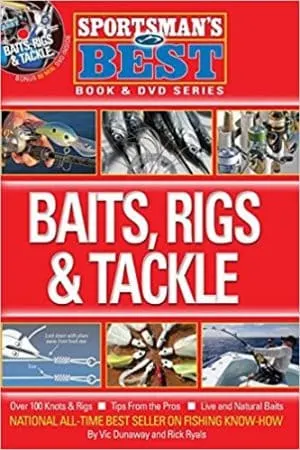
There is only one fishing bible for Florida, and no Florida angler should be without it. Vic Dunaway’s Baits, Rigs and Tackle is the best fishing reference out there. Buy it at any tackle shop, or purchase online for $18 on Amazon.
I also recommend a waterproof “Top Spot” fishing chart for finding hot spots, especially handy in the Ten Thousand Islands ($19). Other Top Spot destinations in this article are Mosquito Lagoon and Islamorada and the Upper Keys
For the latest fishing conditions and sound advice, freshwater and saltwater, there is no better resource than the monthly Florida Sportsman magazine, $25 on Amazon.
Online Resources
Learn more about recreational fishing at MyFWC.com/Marine by clicking on “Recreational Regulations.”
Fishing licenses (and free license days)
Publisher’s Note: Florida Rambler may realize a modest commission for purchases our readers make on Amazon or Hotels.com. This revenue supports our continuing efforts to keep you informed about outdoor recreation in Florida.
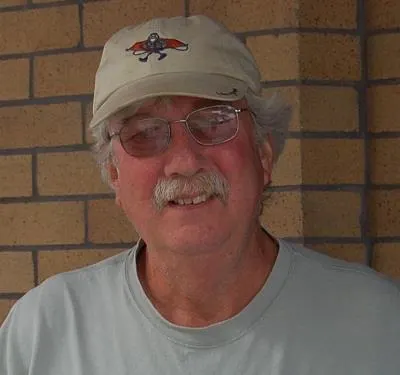
Bob Rountree is a beach bum, angler and camper who has explored Florida for decades. No adventure is complete without a scenic paddle trail or unpaved road to nowhere. Bob co-founded FloridaRambler.com with fellow journalist Bonnie Gross 14 years ago.

